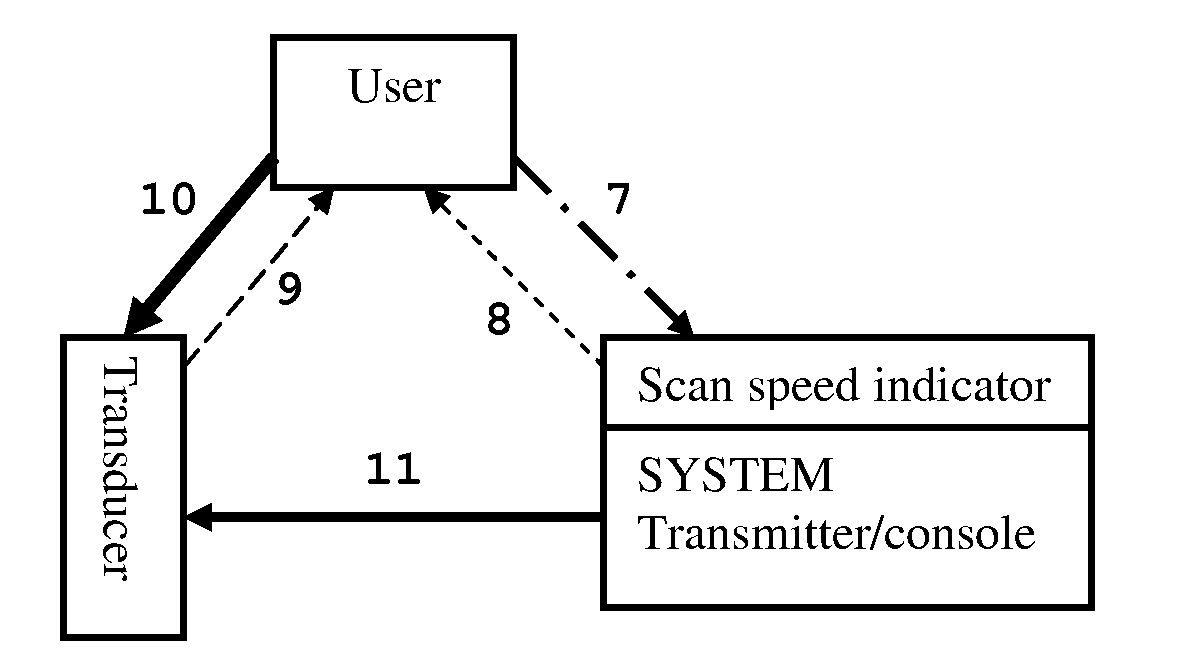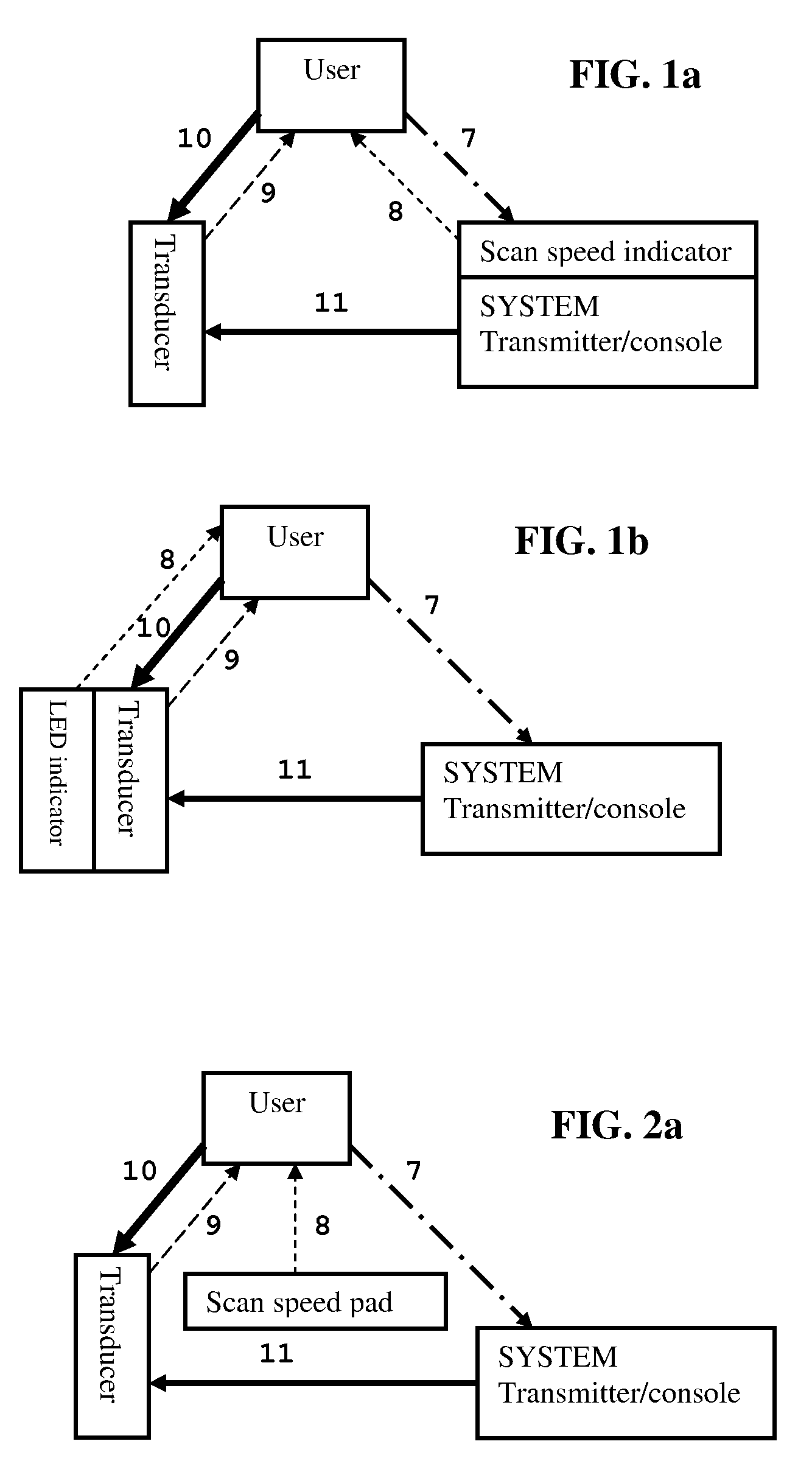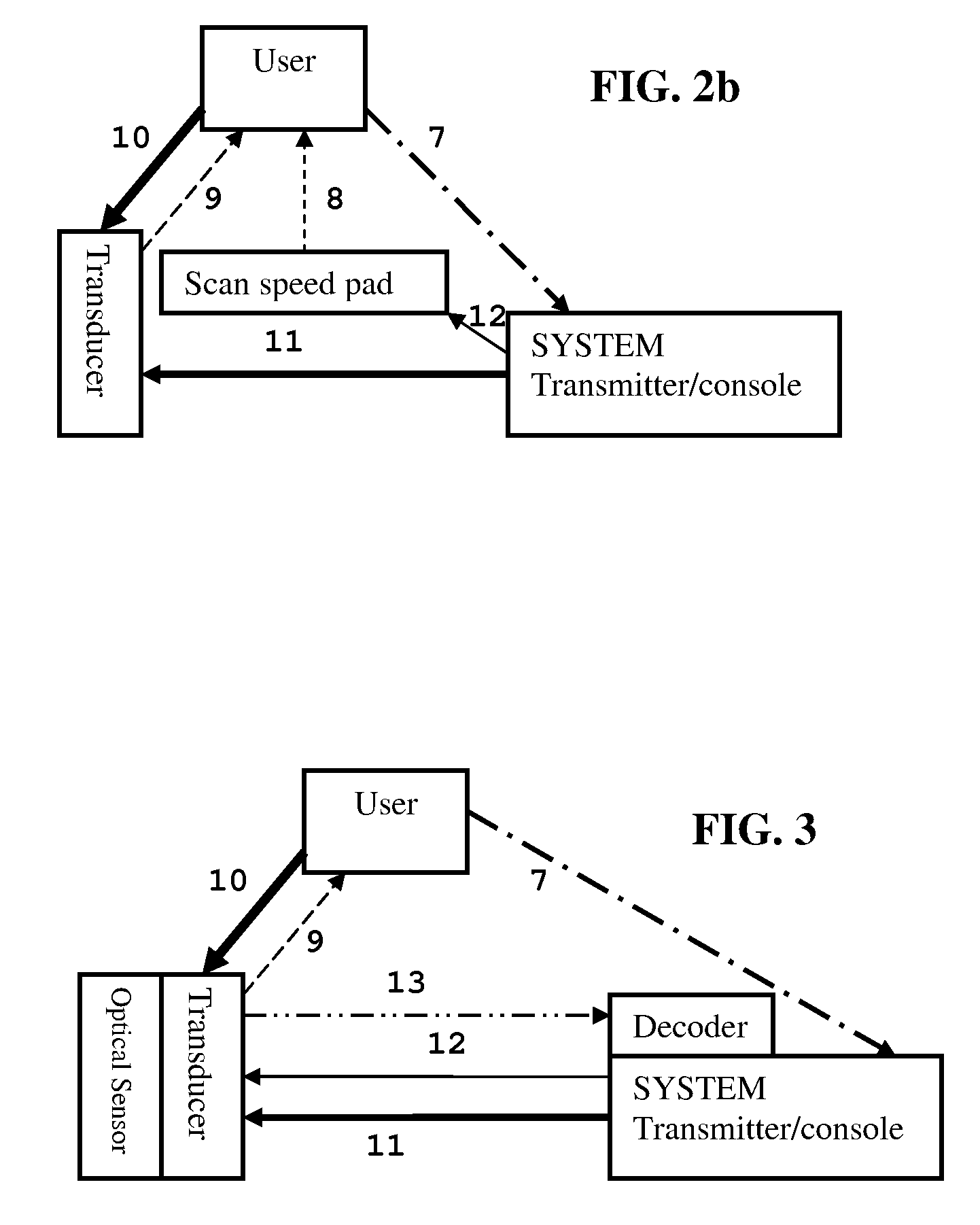Handheld Transducer Scanning Speed Guides and Position Detectors
a transducer and speed guide technology, applied in the field of non-invasive external ultrasound lipoplasty and skin tightening, can solve the problems of reducing the efficacy of the procedure to near zero, affecting the effect of the procedure, and causing indiscriminate tissue destruction,
- Summary
- Abstract
- Description
- Claims
- Application Information
AI Technical Summary
Problems solved by technology
Method used
Image
Examples
first embodiment
[0023]One method requires the user to be part of the feedback loop, whereby the system, the transducer, or a separate device acts as a visual guide for the user to apply the desired scanning speed. The first embodiment is an example of this approach.
second embodiment
[0024]Another method consists of a subsystem that detects the transducer scanning velocity and in real time transfers this information to the system, which in turn adjusts parameters such as MI and TI (i.e., ultrasound dose) to achieve the desired effect based on the actual speed of transducer movement. This relieves the user from precisely matching the desired scanning speed, but still requires the user to keep track of the transducer position and the ultrasound beam focal depth. The second embodiment is an example of this.
third embodiment
[0025]A third method monitors the transducer position, which is transferred to the system in real time. With this information and the presence of a clock, the transducer velocity may also be easily calculated. Now the system can automatically adjust the needed parameters such as MI, TI and focal length to accomplish the planned treatment, giving the user the freedom to move the transducer almost “at will”. The third embodiment is an example of this.
[0026]It should be noted that there is much more value in using a 3D coordinate system, where the (contoured) skin defines two of the dimensions and the depth below the skin surface is the third, rather than a Cartesian coordinate system fixed to the operating room or even fixed to localized patient movements.
[0027]The connecting lines in the functional block diagrams in FIGS. 1a to 3 have the following meaning. The occasional user control of the system / console is shown as 7. Item 8 indicates that the user reads the scanning speed indicat...
PUM
 Login to View More
Login to View More Abstract
Description
Claims
Application Information
 Login to View More
Login to View More - R&D
- Intellectual Property
- Life Sciences
- Materials
- Tech Scout
- Unparalleled Data Quality
- Higher Quality Content
- 60% Fewer Hallucinations
Browse by: Latest US Patents, China's latest patents, Technical Efficacy Thesaurus, Application Domain, Technology Topic, Popular Technical Reports.
© 2025 PatSnap. All rights reserved.Legal|Privacy policy|Modern Slavery Act Transparency Statement|Sitemap|About US| Contact US: help@patsnap.com



